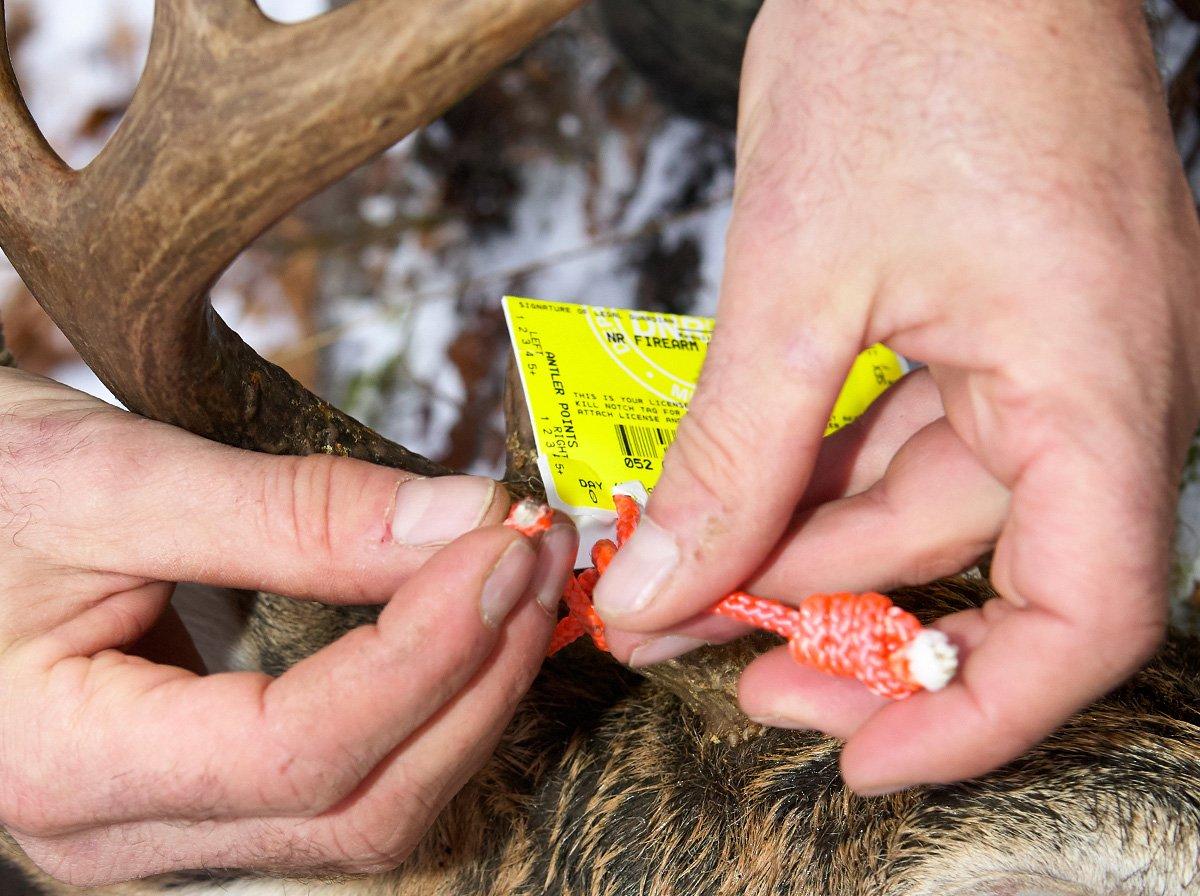Traveling out of state to hunt this fall? Study up, because chances are the rules for checking in a deer elsewhere aren't the same as at home
I travel for whitetails a lot. No two states I've ever been to use the same tagging and checking system. After digging a little further, I couldn't find twin systems anywhere in the nation. There are numerous crazy differences in reporting harvests across America.
Behind the Regs
The extreme differences in tagging and reporting deer harvests can be arbitrary. It'd be a boon for continuity, wildlife research, harvest data, disease studies and more if hunters in every state tagged and reported deer the same way. That's not how this nation works, though. The truth is, each state has its own system and freedom to operate as it deems best, and each has its own unique combination of wildlife species and populations to manage.
It is, however, difficult to understand why states that have the capability still don't collect data from every hunter who kills a deer, instead of using models to estimate harvest totals and other useful information.
Many wildlife agencies don't have the budget, capacity or technology to implement such data collection systems. But the availability of quality, real-time data improves our ability to properly manage wildlife, which benefits deer, deer biologists and deer hunters. Here are some of those crazy differences I mentioned.
1. Carcass Tag Requirements
According to the Quality Deer Management Association, as of 2019, 37 states in the Lower 48 require a physical tag be placed on harvested deer. The remaining 11 states do not require carcass tags in most instances, but some do require one if the animal is given to someone besides the hunter who killed it.
When a tag is required, some agencies require hunters to place it on the antler, ear or leg. Some require hunters to write on the tag, while others mandate physical notches or punches to represent information such as the date of harvest. Each state has different rules on when, why or how long tags must remain on tagged game, too.
2. Harvest Log Requirements
Some states don't require physical tagging, but do order the use of a harvest log. In Kentucky, for instance, it's mandatory to fill out certain information immediately upon recovering the animal, including sex, county of harvest, date of harvest, and more. Some states require you to fill out this information immediately upon recovering the animal. Others require this before moving the carcass or before loading it into a vehicle.
3. Virtual Check-In Stations
Many wildlife agencies offer phone, online and/or mail-in deer checking systems. A series of questions help agencies collect data for research, planning and regulation changes in relation to wildlife management. States that rely on more primitive reporting use variations of mail-in harvest surveys. Some states, like Kansas, Mississippi, North Dakota and South Carolina, only implement hunter surveys and in most cases, participation in those surveys isn't mandatory.
4. Physical Check-In Stations
Though many states have done away with in-person check stations, 17 still use them to gather at least a portion of their data. In many states, this is in an effort to age deer, take CWD samples, or gather other information they can't from a phone- or web-based reporting system.
5. The Timeline
Each state has a different window for how long hunters can check in a deer after it's harvested. The strictest states require you to check in deer by 11 p.m. or midnight on the day you kill it. For others, it's noon the next day. Still, it's longer for others.
6. Combination Approaches
The most common method is a combination of the five requirements listed above. Every state is its own entity and has its own system. Even states that seem at first to have identical tagging and reporting requirements generally don't. Small factors, such as how long you have to report, at what point you must place a tag on the animal, who can be in possession of the animal, and more, create subtle differences.
7. No Tagging or Checking Required
To my knowledge, all states require deer hunters to tag or check their game. But there are some that call only for one or the other, and not both. New Hampshire, Colorado and Montana require carcass tags, for instance, but not phone- or web-based harvest check-in. Yet it's also common for states to skip a physical tag and instead collect harvest data through virtual or in-person game checks.
So, if you're like me and you hunt numerous states each year, don't get annoyed with the vast regulation differences in tagging and reporting deer. Just embrace it. Do your homework. Know the regulations front to back, and keep tabs on annual regulation changes.
In the end, tagging and reporting your harvest is about helping state wildlife agencies help manage deer (and deer hunters). And if your state agency isn't returning the favor with transparent, readily available harvest numbers to help hunters monitor statewide and local herds, it's time you called for it.








